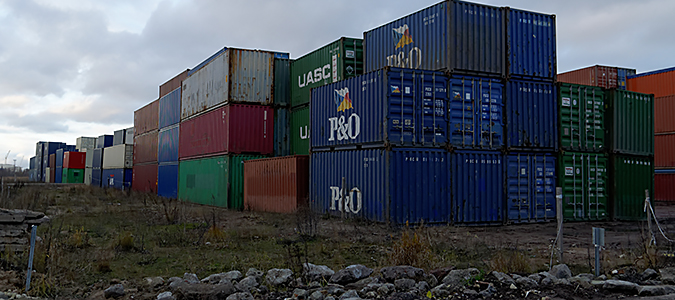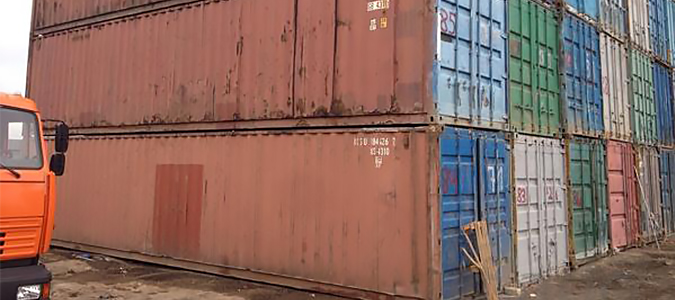 Containers, like any other goods, have their cost according to their condition. Used container combines several evaluation criteria influencing its price level. For most buyers the main criterion for purchase of a used container is still its integrity and tightness. Used containers may have metal patches, welded ribs or other markings after the repair. There are used containers without repair and restoration work, and they in their original form without holes and dents continue to carry out cargo operations. All containers during transportation are exposed to mechanical and other things that can cause defects. Tightness, of course, is an extremely important issue, but not always it is decisive for the buyer. Used containers of 20 and 40 feet are of large interest and they often have different defects. Customers who purchase such used metal containers can repair them and paint parts or the whole container. It is possible to repair containers with improvised means, the most inaccessible form of repair is when welding of elements of used container is needed.
Containers, like any other goods, have their cost according to their condition. Used container combines several evaluation criteria influencing its price level. For most buyers the main criterion for purchase of a used container is still its integrity and tightness. Used containers may have metal patches, welded ribs or other markings after the repair. There are used containers without repair and restoration work, and they in their original form without holes and dents continue to carry out cargo operations. All containers during transportation are exposed to mechanical and other things that can cause defects. Tightness, of course, is an extremely important issue, but not always it is decisive for the buyer. Used containers of 20 and 40 feet are of large interest and they often have different defects. Customers who purchase such used metal containers can repair them and paint parts or the whole container. It is possible to repair containers with improvised means, the most inaccessible form of repair is when welding of elements of used container is needed.
When can we begin to assert that a sea or a railway container refers to the type of used containers? Can a new container stored without exploitation for any reason for the period of time before the sale be called a used container? For all the time that the container was stored in the open area it was also subjected to external atmospheric phenomena. For the whole it cannot be compared with the constant movement of containers by railway or by sea, but the change of seasons, temperature and precipitation are harmful at least for the external condition of the containers. Here we should make a remark that all containers before terminal storage make one trip from a plant to container depots where used containers can be bought, so you should understand that every of these containers can be called used. In our opinion, to classify a container as a used one, it’s necessary to look for inside and outside defects. If railway or sea containers have scratches or dents, their floor and inner walls are damaged, the container can be easily classified as used.
 One of the ways to repair used containers with significant damages is cutting the sides of the container and welding remainder of the container with another part of used railway or sea container. The result is a container in a sealed condition, but with welded joint. Moreover, a container can be primed and painted to make it look good. All the types of sea and railway containers can be bought as used. They are dry containers of 20 ft, 40 ft and 45 ft, PALLET WIDE containers, refrigerated containers and the others which production continues today.
One of the ways to repair used containers with significant damages is cutting the sides of the container and welding remainder of the container with another part of used railway or sea container. The result is a container in a sealed condition, but with welded joint. Moreover, a container can be primed and painted to make it look good. All the types of sea and railway containers can be bought as used. They are dry containers of 20 ft, 40 ft and 45 ft, PALLET WIDE containers, refrigerated containers and the others which production continues today.















